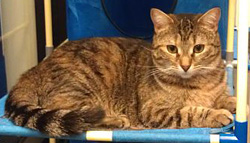Adjacent possible

There’s a term — adjacent possible — that refers to what could happen next given the current state of things. If “you can get there from here,” your destination is the adjacent possible, even if you never go. The first metal coil spring, for example, was patented in 1763 by a man named Tradwell, yet the first spring-loaded mousetrap wasn’t invented until 1894 by a man named Hooker. The mousetrap had been adjacently possible, sitting right under our noses for 131 years before Hooker realized that it was there.
Conversely, the computer mouse wasn’t part of Tradwell’s or Hooker’s adjacent possible. There were way too many unconnected dots, both conceptually and mechanically, between them and the remotely controlled graphical user interface.
There’s another term — singularity. Coined by science fiction writer Vernor Vinge and popularized by futurist Ray Kurzweil, “singularity” refers to the not-far-off moment when computers “wake up.” Only recently have the boundaries of the adjacent possible expanded to include this phenomenon. Kurzweil predicts that it will happen within 15 to 20 years.
The adjacent possible is a moving target, of course, and an accelerating one, but thus far not particularly mysterious. Moore’s law, which predicted in 1965 the doubling of computer processor speed every two years has held true for half a century. When the singularity takes place, however, all bets will be off. Anything might happen. In the broadest sense, then, singularity causes subsequent events to move so quickly that the adjacent possible becomes impossible to discern.
That’s the big picture.
On a smaller scale, I’ve been thinking about my own adjacent possible and whether I might experience a private singularity from time to time. Malcolm Gladwell talks about the “tipping point,” his term for what the Cold War gave us as “critical mass.” Circumstances pile up, achieve a kind of balance, then flow in one or more of an infinite number of possible directions.
![]()
A cat crawled onto my chest about two years ago as I lay drowsing on a friend’s deck. I’d disliked cats all my life and this cat had been a standoffish one. Looking back, I can’t say whether the cat induced a singularity, a tipping point, a critical mass or a major interspecies landgrab of the adjacent possible, but the effect was that what I’d always thought of as my natural enemy became my friend. I liked cats. All cats, all of a sudden.
And soon, it seems, I’ll be a cat owner. A cat owner. Tim Brosnan.
What’s adjacently possible beyond this place is anybody’s guess.
(Nina won’t be along for the ride, incidentally. Emotional problems. Poor kitty.)